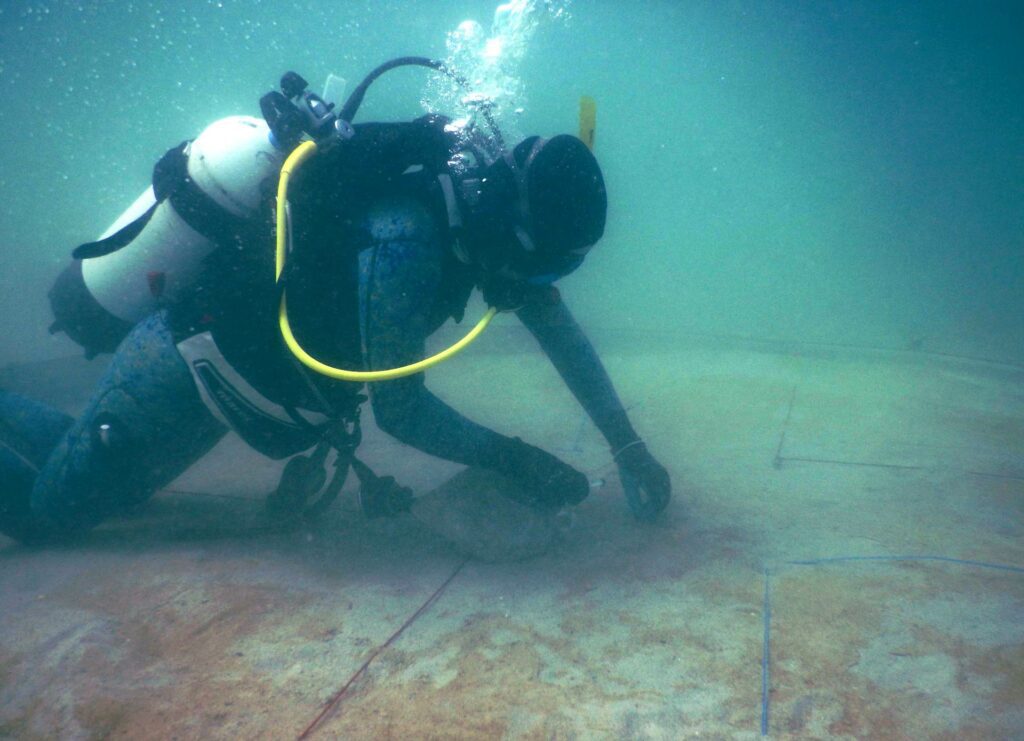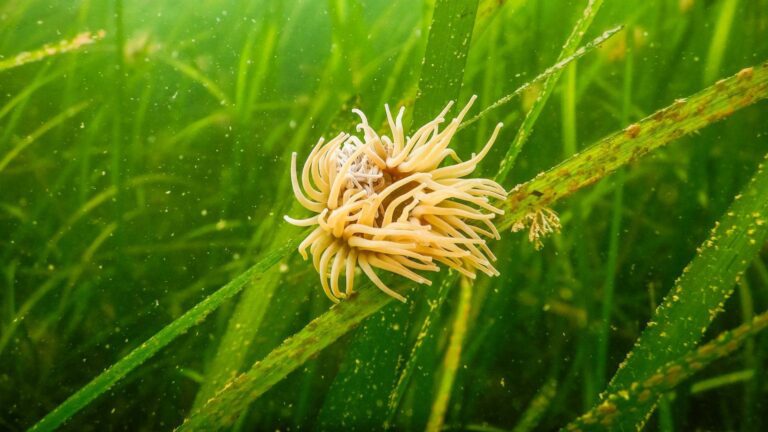An “amazing” increase in seagrass cover has been reported in south Cornwall’s Cawsand Bay by the UK-based Ocean Conservation Trust (OCT), following the installation of the first Advanced Mooring Systems (AMS) there four years ago.
The OCT had teamed up with the Marine Conservation Society (MCS) on the project to protect seagrass beds – regarded as a vital habitat for local biodiversity, carbon storage and coastal protection – while allowing boats to continue mooring in one of the busiest areas of Plymouth Sound.
Traditional anchoring and mooring systems damage delicate seagrass habitats as chains drag along the seabed, says the OCT, and also use a heavy concrete sinker block to attach the mooring to the seabed, leaving “a large and damaging footprint”. The AMS employs a series of midwater floats to elevate the chain above the seabed, allowing seagrass to grow undisturbed.


“It’s a big win for this sensitive habitat,” said OCT head of ocean habitat restoration Mark Parry. “Protecting and restoring seagrass requires a holistic approach and, by finding workable solutions like this, it allows communities to continue enjoying the ocean while having a lesser impact on the environment.”
Five Advanced Mooring Systems were installed in Cawsand Bay in 2019, and 12 more added in 2021. “This applied conservation effort with the boating community has had significant positive impact on the seagrass meadows here, so we are very interested to expand this work to other sites,” says the OCT.
“You can’t get restoration without protection, and by working with the local boating community to protect the seabed, we have collectively given space for this rewilding to take place,” commented Dr Jean Luc-Solandt, MPA principal scientist of the MCS.
“Against the backdrop of the climate and nature emergency, the success of this simple system shows how pioneering projects can have a mitigating effect on the impacts of climate change, and reverse local biodiversity decline.”
Dredging to create underwater garden
On the other side of the world, meanwhile, scientific researchers have come up with a seagrass-boosting idea that requires some heavy lifting.
With the help of commercial divers they have been dredging seabed sediment and using it to create underwater garden beds in a nearby area of the Indian Ocean inlet Cockburn Sound.
About 80% of the sound’s seagrass meadows had been wiped out by the 1970s because of excessive nutrient discharge – and they have struggled to recover. So the team are capping the seabed sediment, which still retains some nutrient contamination, to see whether that improves the survival rates of transplanted seagrass.
The project, led by University of Western Australia (UWA) and Murdoch University, forms part of the Western Australian Marine Science Institution Westport Marine Science Programme.

Seagrass researcher Dr Giulia Ferretto, from UWA’s School of Biological Sciences, said that the operation had required many months of planning.
“We used a small barge to take 15 garden-bed rings out to the site in Cockburn Sound, then commercial divers fixed them on the seafloor,” she said. “The barge also carried out tonnes of dredge spoil in 700kg bags, and a hoist helped lower the contents into the water.
“We are going to compare the health and survival of seagrass sprigs planted in existing sediment to those planted in the dredged material. We have mixed a controlled amount of organic seagrass wrack into some of the dredged sediment to see if that natural ‘compost’ also makes a difference.”
Once the beds were in place, the divers raked the sediment before digging small trenches in which to plant the seagrass sprigs. Scientific divers will now be checking the shoots at regular intervals.
“If the addition of dredge spoil is shown to improve sediment conditions for seagrass, then we would be able to increase the survivability of future restoration efforts, as well as expand the area that is suitable for seagrass restoration in Cockburn Sound,” said Henry Evans, a research assistant at Murdoch University.
Also on Divernet: Biggest seagrass bed yet identified in Cornwall, Seagrass Project Gets Going In Cornwall, Blues Meadows Seagrass Project Underway, World’s Biggest Plant Revealed in Shark Bay, Divers Shift Seagrass Seeds And Nets, We Should Fight To Protect UK Seagrass, Seagrass Damage A Double Whammy

